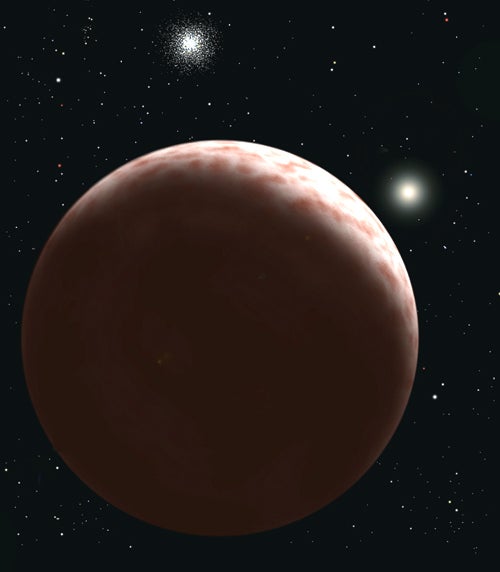Sedna has baffled astronomical sleuths ever since it was discovered. The planetoid, located at the edge of our solar system, appeared to rotate once on its axis every 20 days — much slower than similar-sized bodies. Astronomers initially believed an unseen moon caused this sluggish rotation. After Hubble Space Telescope images revealed no significant companion existed, Sedna became more puzzling. It turns out, however, this whodunit is more miscalculation than mystery.
The Harvard-Smithsonian Center for Astrophysics (CfA) determined Sedna rotates much faster — once every 10 hours — than previously believed. The recalculated rotation period, characteristic of similar bodies in our solar system, closes the book on a companion moon affecting Sedna, and permits astronomers to use a word not often associated with the planetoid: typical.
“Until now, Sedna appeared strange in every way it had been studied. Every property of Sedna that we’d been able to measure was atypical,” says Scott Gaudi of CfA. “We’ve shown that Sedna’s rotation period, at least, is entirely normal.”
Gaudi and his CfA team observed Sedna using the new MegaCam instrument on the Multiple Mirror Telescope at Mt. Hopkins, Arizona. By examining the object’s brightness, they measured Sedna’s rotation speed. The data revealed a subtle variation that was missed in the original rotation measurements.
Mike Brown, associate professor of planetary astronomy at Caltech and leader of the team that discovered Sedna, told Astronomy he is relieved by the CfA findings.
“When we didn’t see the moon we had originally hypothesized last year our best guess was that the rotation period was going to turn out to be much faster than we originally thought,” Brown says. “I am gratified to see that it looks like this work has confirmed that initial hypothesis, and I’m glad this group has taken up the task of figuring out Sedna’s rotation.”
While one question is answered, more remain: Where did Sedna come from? Why does the minor planet appear unusually red? Why does it have such an inconsistent elliptical orbit?
Unlike the first Sedna mystery, these answers will not be as easily resolved.










